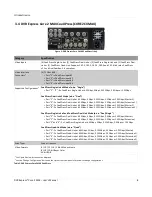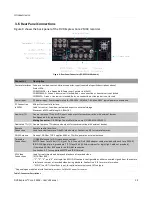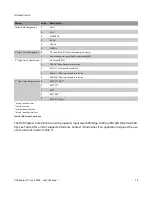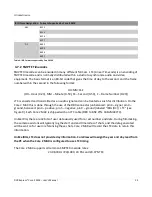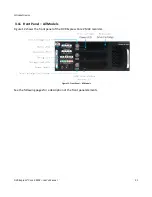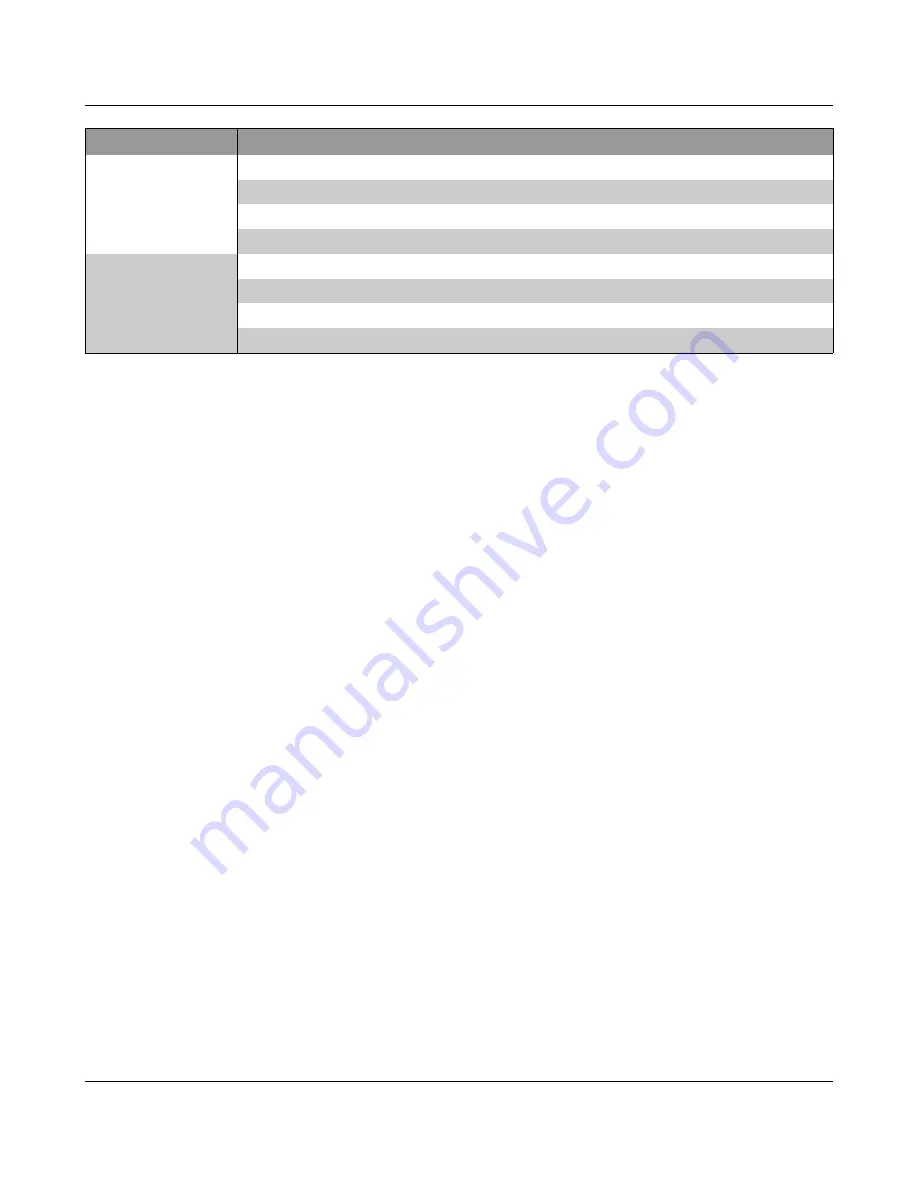
IO Industries Inc.
IRIG Form Designation Formats Supported by Core 2 MAX
AM
B122
B123
B126
B127
DC
B002
B003
B006
B007
Table 9: IRIG Formats supported by Core 2 MAX
3.7.2 SMPTE Timecodes
SMPTE timecodes can be encoded in many different formats. LTC (Linear Timecode) is an encoding of
SMPTE timecode and is normally distributed within a studio to synchronize audio and video
equipment. The basic format is an 80-bit code that gives the time of day to the second, and the frame
number within the second in the following format:
HH:MM:SS.F
(HH – Hour (0-23), MM – Minute (0-59), SS – Second (0-59), F – Frame Number (0-29))
LTC is encoded and transmitted as an audio signal and can be treated as such for distribution. On the
Core 2 MAX this is done through the use of the DB9 connector (unbalanced: pin 4 – signal, pin 9 –
ground, balanced: pin 4 – positive, pin 5 – negative, pin 9 – ground) labeled “IRIG (DC) / LTC” (see
Figure 9). Each Core 2 MAX is shipped with an LTC cable (DB9 to BNC P/N: CAB2MAXLTC).
Unlike IRIG, there are 32 bits of user data usually used for a reel number and date. During filmmaking,
the camera assistant will typically log the start and end timecodes of shots, and the data generated
will be sent on for use in referencing those shots. Core 2 MAX will record the LTC data to retain this
information.
Unlike IRIG, LTC does not provide day information. CoreView will assign the year and day read from
the PC when the Core 2 MAX is configured to use LTC timing.
The Core 2 MAX supports all common SMPTE timecode rates:
23.98-30Hz 720/1080, 24 PAL and 29.97 NTSC
DVR Express® Core 2 MAX – User's Manual
15








